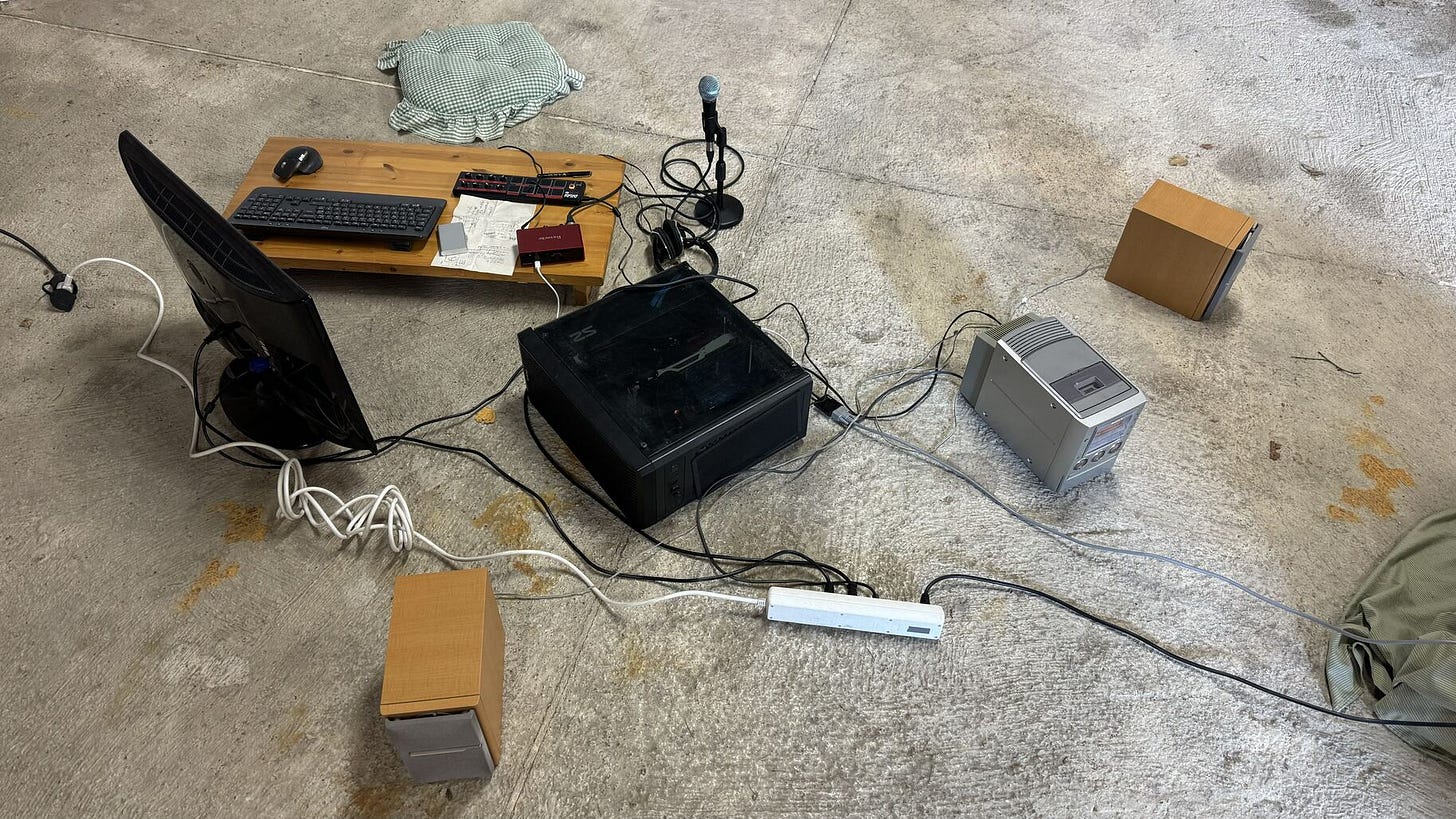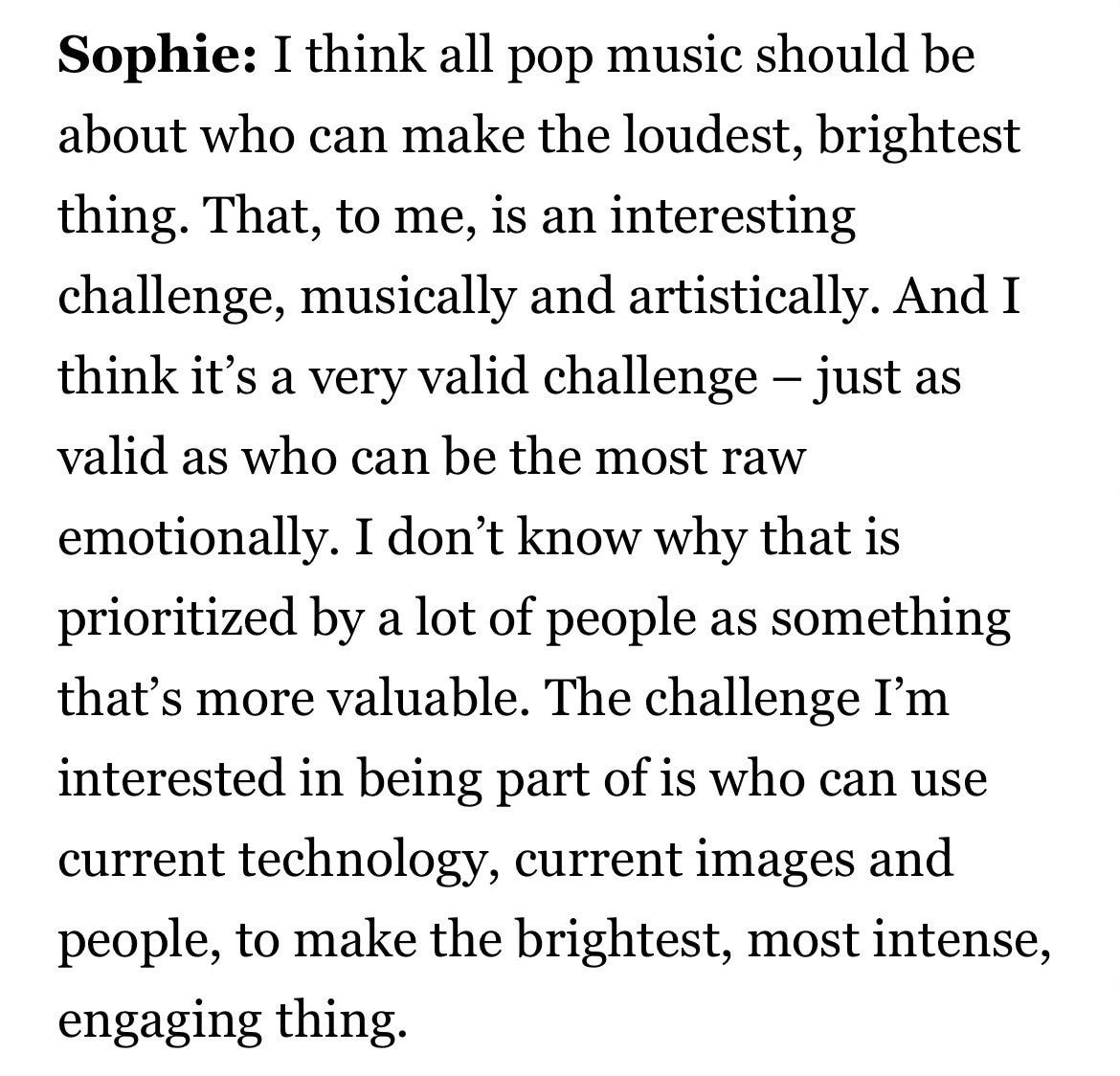Last week i realized my dream of doing an audio/visual performance where abstract breathing patterns are animated by the live vocals, continuing my research of guided meditation videos i’ve been doing on and off since 2021. It feels good to find out the dream was not so far-fetched and that i can now repeat this experience over and over and over and over and over in a thousand ways.
i thought i wanted to write about the technical aspects of the work in this post, but as i’m typing i think there’s more to extract in recounting where this all came from and reflect on what it means. In particular, what do we get from digital art and all its possibilities for interaction, that we don’t get in other forms of art ?
human and computer synthesis
Sometime in 2013 i started taking the internet seriously as a portal to access dreams. One encounter i remember vividly was seeing the video for Nosaj Thing’s track "Eclipse/Blue", where two dancers perform a choreography while abstract animated visuals echo their movements in real-time.
To make the video, [the director] Daito’s team tracked the choreographed movements of two dancers – one in front of a screen, the other behind it. Then, in real time, Daito’s programmed animations were projected onto the dancers’ bodies. The result is a mesmerizing and psychedelic fusion of bodily and computer-animated movement.1
Even though at that time i was neither a musician, dancer, or creative technologist, something about uniting the bodily experience with computer-generated imagery just made sense in my mind. Bridging these two worlds with distinct languages and internal logic is a way to reveal both the computer in the human, and the human in the computer.
It’s no wonder, every creative working mindfully with technology will tell you the depth of their relationship with computers in turn deepened their relationship with nature. Similarly, working with creative technology, through exploring both its power for augmented expression and its limitations, is a beautiful path towards understanding oneself. Once sufficiently locked in, one gets insights of the programmable, computer-like nature of the human brain: the written code serves as a mirror revealing the structure of the coder’s mind, and giving concrete shape to its otherwise immaterial nature. i have since walked on this path, seduced by the possibilities of working with human signals in unison with rapidly evolving technological tools.
empirical experience of the computer as creative tool
Over the years i have then become a computer nerd. Tackling any creative problem through the machine, my mastery in speaking its language became the crux of my work and income. The whole time, a voice was repeatedly whispering Gesamtkunstwerk2 in my head, reminding me of my goal — that all of this was a rite of passage to gain the power of infinite creation.
i knew i wanted to animate things, and that they should feel rather organic and messy than to submit to the perfection of the computer. Progressively my focus became to make the computer disappear from the end result. To kill the math. And i soon realized i would get the best results if the tools themselves were offering space for humanity — that’s when i got into real-time procedural tools TouchDesigner and Unreal Engine.
In parallel, as my interest in spirituality and psychology grew, i found that the plethora of tools and tricks at hand in these programs are great to depict psychological states in novel ways, through animation, space and time warping, randomized colors, and such.
Now i have achieved my goal of ultimate digital creation. But i also feel the need to share the flipside: there are three traps i have experienced when creating art with computers:
it’s very tempting to amalgamate the technological novelty with the idea of the work — to someone with no clue of computer logic, the visual excitement of an animated shader can be enough entertainement, regardless of whether it makes sense on any level in the final work. Technique will always be magic on some level, and computer creative tools have a lot of pockets to make use of this deceiving trick. In this realm of digital creation, the creators of the tools and of the hardware are the real M.V.Ps.
all is moving very fast and one can pour out works faster than understanding them. There are rarely ‘waiting for the paint layer to dry’ checkpoints with computer tools, which makes it easy to speedrun execution, but compromises the necessary time of contemplation to feel the work coming to life. Ironically, while most of the work can be automated in some way, this one part becomes a manual process, where one needs to consciously stop, observe, give space.
we come to face artificial abundance: working with code and procedural tools, one has the power to create infinite variations, which in my case has sometimes caused a lot of decision-paralysis, endlessly tweaking parameters in a feedback loop of eye-candy arousal. The price of abundance is the loss of meaning.
Over time, after oscillating between surrendering to the tools and being overly controlling, i developed a rationale to guide the work i produce with the computer: technology’s primary function is to channel aliveness.
the meaning of interactivity in digital media
i still don’t know what it means myself, or why it’s so close to my heart. Why have i been so enthusiastic about doing this project for so long ? In what way is interactivity special enough that for the past 5 years i’ve learned the full spectrum of computer creative tools from animation to 3D to TouchDesigner to real-time video game engines to audio production ?
One thing i know is i’ve been relating to this quote from late genius producer SOPHIE:
i guess this is part of the answer: i think taking advantage of the current technology to make signals interact (like syncing audio and image), and to treat them as one, participates in making the art louder and brighter, as SOPHIE puts it. The technology enables artists to do such manipulations very easily now. We can now create at the level of worlding: a simple input can trigger a butterfly effect of interdependent cascading events. Who knows how many more signals we could sync in perfect harmony ?
That’s all there is to it really. i learned to use all these tools because they brought me the most excitement. i pledge no allegiance to digital media as an aesthetic choice or career path besides that. As an experience, i don’t enjoy the fact that optimal conditions for viewing digital art are in dark rooms — yet i’m still here because the trade-off still feels valid, and the potential amount of aliveness in digital media is unrivaled.
One thing i know is that for me nothing else feels as fulfilling than for the art to be a space and moment of ritualistic wonder, where the offering is generous enough to submerge, hypnotize and even transform. As i’m now going down my own path and exploring my own form of offering, when performing i believe i am speaking to myself in 2013, sharing a distant echo of the awe i felt watching that Nosaj Thing music video.
So this was a checkpoint before what’s next. A first version of audio-visual dream of total art…………. i’m excited to keep doing this. Check out the performance from last week below ♡
from German: 'total work of art', 'ideal work of art', 'universal artwork', 'synthesis of the arts', 'comprehensive artwork', or 'all-embracing art form'






